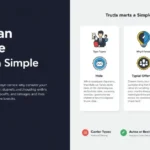The metastream is revolutionizing how we experience live streaming by leveraging decentralized technologies. Unlike traditional platforms, metastream offers enhanced security, lower latency, and greater user control. This article explores how metastream works, its benefits, and why it’s poised to disrupt the digital content landscape.
What Is Metastream?
Metastream refers to a decentralized live streaming ecosystem that eliminates reliance on centralized servers. Instead, it uses peer-to-peer (P2P) networks and blockchain to distribute content efficiently. This approach ensures faster streaming, reduced buffering, and censorship resistance.
Traditional streaming platforms face issues like server overloads, high costs, and privacy concerns. Metastream solves these problems by decentralizing data distribution, allowing users to share bandwidth and resources.
How Metastream Works?
1. Decentralized Content Delivery:
Instead of relying on a single server, metastream breaks data into smaller chunks and distributes them across multiple nodes. This P2P model ensures smoother playback even with high traffic.
2. Blockchain Integration:
Smart contracts automate payments, allowing content creators to monetize streams directly. Viewers can tip or subscribe using cryptocurrencies, reducing transaction fees.
3. Enhanced Privacy & Security:
Since metastream doesn’t store data centrally, it minimizes hacking risks. End-to-end encryption ensures only authorized users access the content.
Key Benefits of Metastream:
| Feature | Traditional Streaming | Metastream |
|---|---|---|
| Latency | High (due to server distance) | Low (P2P reduces delays) |
| Cost | Expensive (server maintenance) | Affordable (shared resources) |
| Censorship | Prone to restrictions | Resistant (decentralized) |
| Monetization | Platform-dependent fees | Direct crypto payments |
| Scalability | Limited by server capacity | Highly scalable (P2P) |
Why Metastream Is the Future?
-
Lower Costs – By eliminating middlemen, metasttream reduces operational expenses.
-
Better Performance – Decentralization minimizes lag and buffering.
-
User Empowerment – Creators retain full control over their content and revenue.
-
Global Accessibility – No geo-restrictions, making streams available worldwide.
Conclusion:
The metastream is transforming live streaming by offering a faster, cheaper, and more secure alternative. As decentralization gains traction, metasttream could soon replace traditional platforms, empowering creators and viewers alike.
FAQs:
1. What makes metasttream different from regular streaming?
Metasttream uses P2P networks instead of centralized servers, reducing costs and improving speed.
2. Is metasttream more secure than traditional streaming?
Yes, its decentralized nature and encryption make it less vulnerable to hacks.
3. Can I monetize my content on metasttream?
Absolutely! Smart contracts enable direct crypto payments from viewers.
4. Does metasttream work on all devices?
Most modern devices support P2P streaming, ensuring broad compatibility.
5. How does metasttream reduce buffering?
By distributing data across multiple nodes, it minimizes server overload.
6. Will metasttream replace platforms like YouTube or Twitch?
While it’s too early to say, metasttream offers a compelling alternative with unique advantages.
By embracing metasttream, the future of live streaming looks decentralized, efficient, and user-centric. Stay ahead by understanding this groundbreaking technology today!











